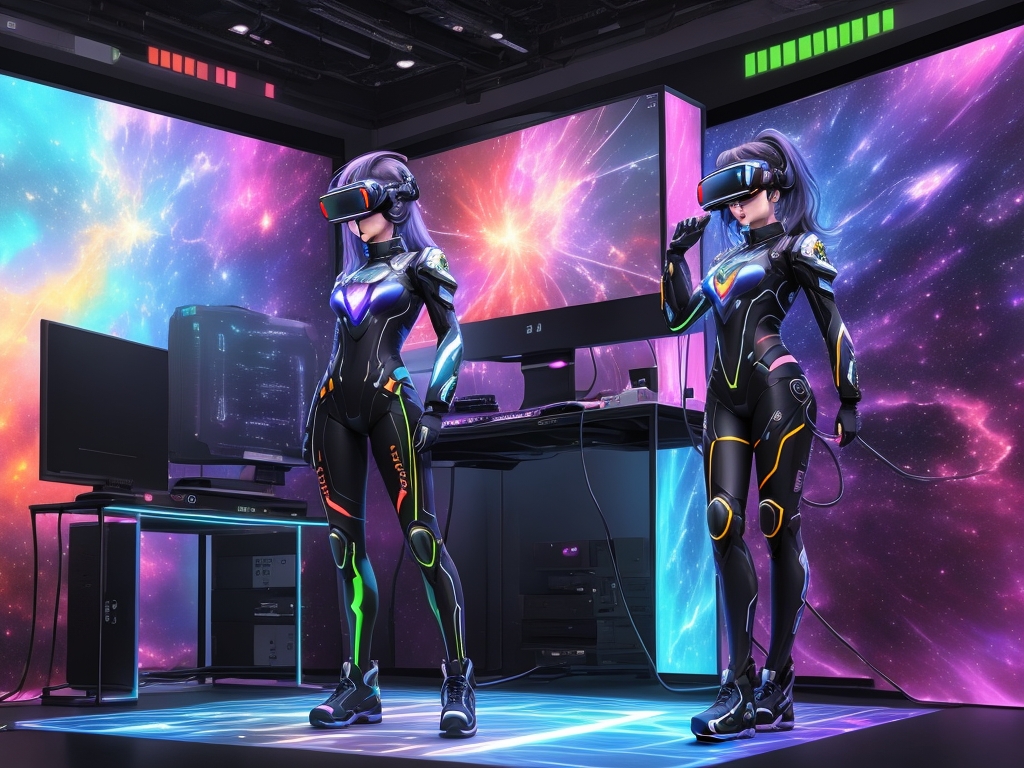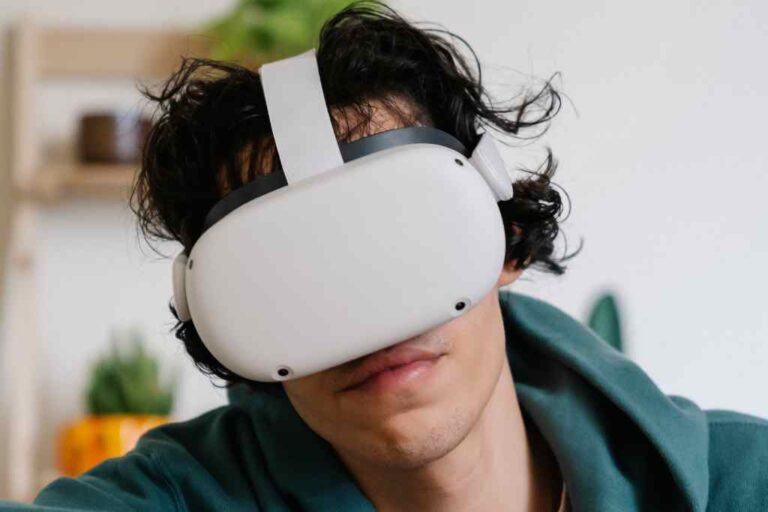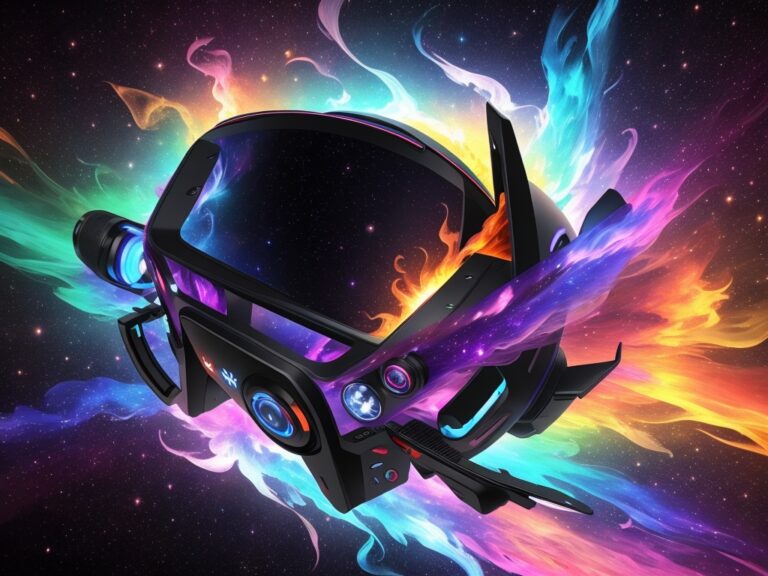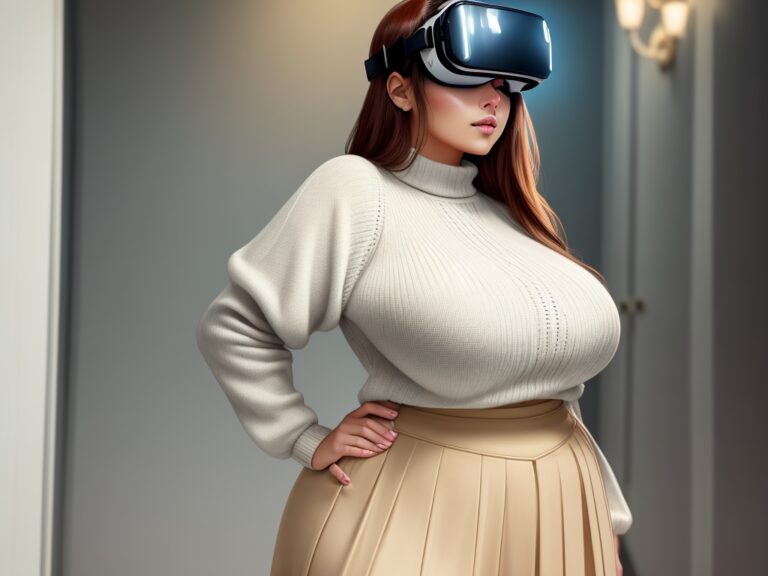Master the Art of Virtual Reality Game Development: A Comprehensive Guide
Discover the exciting world of virtual reality game development with our comprehensive tutorial. Learn how to create immersive experiences, design captivating gameplay, and unleash your creativity in this cutting-edge field.
Key Takeaway: Virtual Reality Game Development
- Unique idea generation is crucial for virtual reality game development. Developers must consider the immersive nature of VR and create games that take advantage of the technology.
- Choosing the right platform and game engine is key to a successful VR game. Developers must consider factors such as compatibility, features, and ease of use.
- Testing and maintaining high quality are key in VR game development. Developers must rigorously test their games to ensure they are polished and optimized for a seamless VR experience. Post-production efforts should focus on improving the product based on feedback from users.
Introduction: Virtual Reality Game Development
With the surge in the gaming industry, Virtual Reality game development is gaining immense popularity. In this article, we delve into this fascinating domain and explore the nuances involved in creating virtual reality games that offer an immersive experience to players. It is essential to understand the intricacies of virtual reality technology and harness it effectively in game development. Let us explore this world of virtual reality game development and the exciting possibilities it brings to the gaming industry.
Virtual reality game development involves creating immersive games that integrate advanced technologies, such as 3D graphics, haptic feedback, and motion tracking. The goal is to create an environment that offers a realistic and engaging experience to players, thereby increasing player retention and satisfaction. Game developers need to integrate different components, such as game mechanics, storyline, and user interface, to create a seamless experience. By using various tools and technologies, developers can create stunning visual effects, intricate game worlds, and smooth gameplay that keeps players engaged.
Game developers need to stay updated with the latest trends and technologies to deliver cutting-edge virtual reality games to the players. It is essential to test the game extensively to ensure that it runs smoothly on different platforms and devices. Developers should also consider the target audience, preferences, and behavior to create a game that resonates with them. In summary, creating a successful virtual reality game requires a combination of technical expertise, creativity, and a deep understanding of the industry.
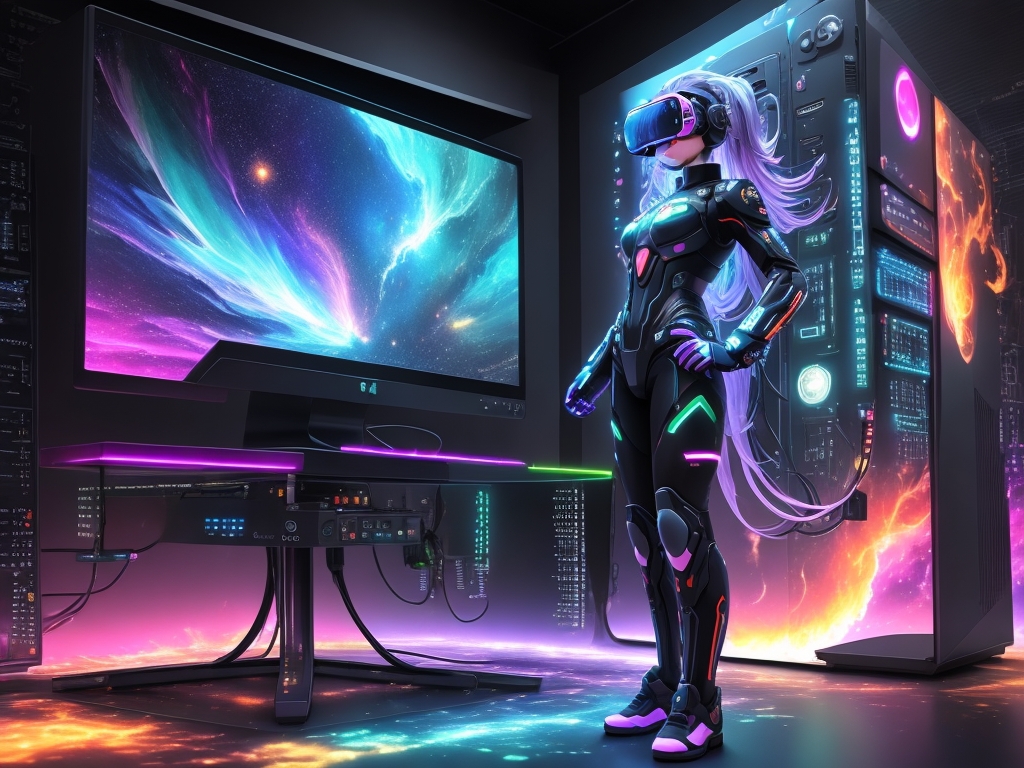
Don’t miss out on the exciting opportunities offered by Virtual Reality game development. As the popularity of virtual reality games continues to grow, game developers must stay updated with the latest trends and technologies to keep up with the competition. With the immersive experience offered by virtual reality games, it is essential to grab this opportunity and create games that leave a lasting impression on players. Start exploring the world of virtual reality game development today.
Preparation
As a virtual reality game developer, preparing well is essential for a successful game. Preparation lays the foundation of the game development process, and each step in the preparation phase requires careful consideration. First, I gather a team with diverse talents and utilize their skills for unique idea generation. Next, we choose the most suitable platform for our game to maximize its potential. Then, we set our artists to work on bringing our vision to life by creating detailed drawings and sketches. To keep our ideas on track, we create a game design document and a test design document. By taking all these steps during our preparation phase, we put ourselves in the best possible position to turn our virtual reality game into a substantial success.
Unique idea generation
Brainstorming innovative and distinctive ideas is paramount to successful virtual reality game development. The creation of such unique concepts is the first phase of game development, where the team identifies a key element that can differentiate their product from others in the market. Avoiding replication of pre-existing games necessitates creative and out-of-the-box thinking while still keeping in mind what players enjoy about existing titles.
One approach to generating original ideas is encouraging team members to take frequent breaks and engage in activities outside of their work environment. This allows for a more thoughtful process, reflecting on various sensory experiences, which may stimulate new ideas. Another way is through engaging with an active community, getting feedback on ideas, and inspiring cooperation with professionals from different disciplines.
To enhance unique idea generation further, establish clear benchmarks and objectives early on during brainstorming sessions, while maintaining an open-minded mindset towards new ideas. There should also be continuous evaluation of all brainstormed concepts in terms of feasibility, plausibility, and profitability to ensure only the most promising ones proceed for development.
When it comes to choosing a platform for your VR game, remember: just because it’s the latest doesn’t always mean it’s the greatest.
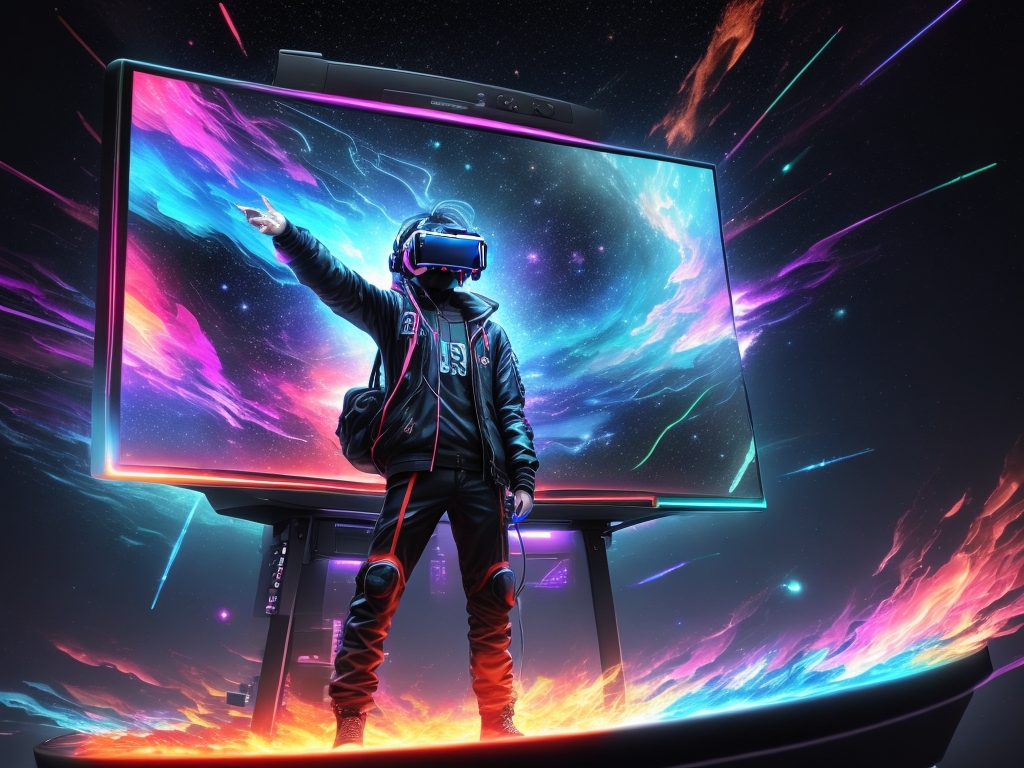
Platform selection
Proper platform selection for virtual reality game development requires careful consideration of the target audience, hardware compatibility, and development budget. Researching popular VR platforms can narrow down options while evaluating their features can ensure that the chosen platform suits the game’s requirements.
Moreover, selecting a suitable platform requires analyzing the resources involved in developing for that platform and assessing if they fit within the project’s timeline, strategic direction and roadmap. Favourable developer communities and ease of integration with existing technologies should also be taken into account.
When making platform selection decisions, it’s imperative to avoid popularizing biases or going where others are for the sake of becoming popular. Instead, an informed decision should be made based on empirical research on what specific market(s) cater to, and selectively partnering with leading VR hardware publishers as game engines majorly output to specific headsets.
Development studios have learned this lesson; during Oculus Rift production early-stage adoption rates were lower than expected. It turns out this was likely because few developers had committed to building games until a more substantial number of consumers could get hold of headsets lower them.
One such studio developed a multi-platform strategy around VR itself. Firstly focusing on mobile and standalone headset releases enabled them to use Unity Game Engine which has relatively good cross-platform support along with a smaller learning curve.
The right team means the difference between creating a VR masterpiece and a VR disaster, so draw in the best talent like a black hole sucks in stars.
Drawing talents to a team
One of the critical components in creating virtual reality games is bringing together a group of talented individuals with varying skill sets. The goal is to ensure the development process is efficient, and everyone brings their unique ideas and experiences to the table. It’s important to create an environment that fosters creativity and collaboration.
To draw talents to a team, one strategy could be to establish clear roles and responsibilities for each member from the onset. This can help minimize confusion while creating an effective communication system for team members to quickly interact.
Another way of drawing talents could involve conducting pre-interview screening tests during recruitment to verify skills such as problem-solving, attention-to-detail, effective communication, teamwork and brainstorming abilities.
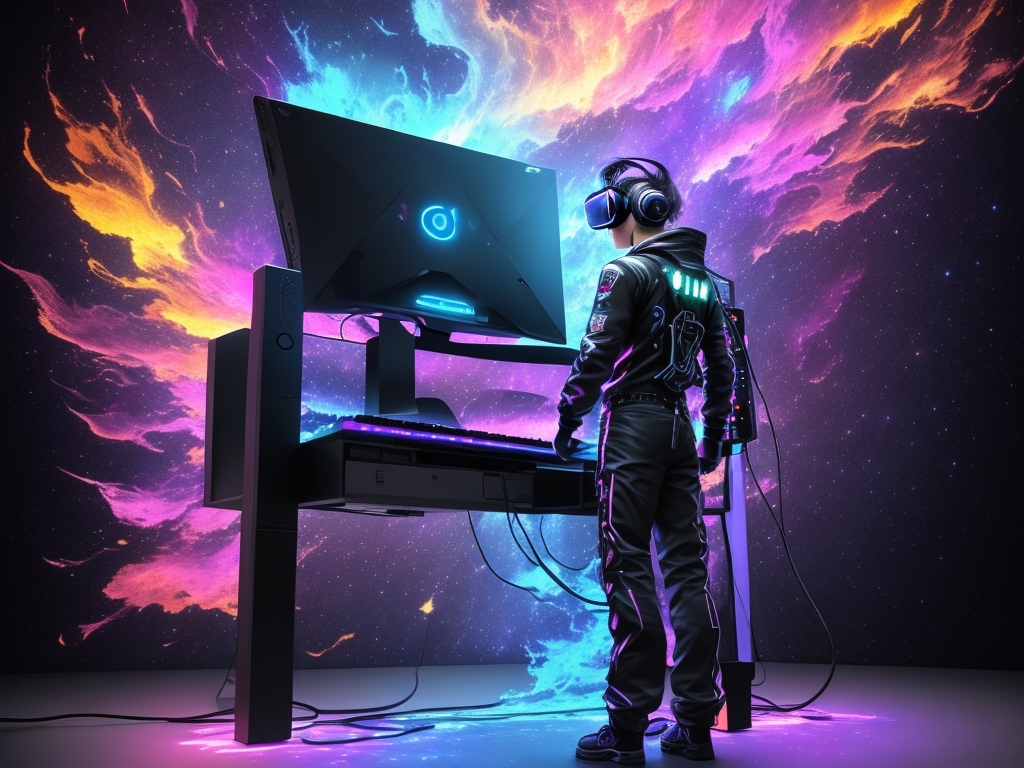
For instance, selecting professionals who have experience working on VR platforms as well as those with diverse cultural backgrounds can not only provide fresh perspectives but also expand the game’s potential audience.
As an industry case in point, VR games such as Beat Saber by Czech Republic-based Beat Games LLC attracted worldwide interest due to their outstanding design & quality.
Drawing talent effectively requires striking a balance between hiring professionals with proven skills and welcoming new hires who bring fresh perspectives. Incorporating these strategies is essential when building teams focused on delivering top-notch virtual reality games while maintaining consistently high-quality standards throughout the production process.
Designing the blueprint for your game: because without a plan, your VR game might end up as lost as a virtual reality headset in the physical world.
Game design document creation
Creating a comprehensive plan for the game is crucial before starting to work on its development. Designing a Game Design Document (GDD) is an essential part of any game development process and a significant stage in the creation of virtual reality games. The GDD includes different aspects of the game such as the story, gameplay mechanics, characters, levels, user interface design, and sound effects. It serves as a blueprint for the entire development team to understand their roles and responsibilities.
To create a GDD, the developers must first identify their target audience and consider their interests. This information helps to mold the overall gameplay experience and storyline. They will also need to determine which engine they will use, the required resources, and achievable targets. It’s best to include detailed descriptions for every aspect of the game in order to avoid conflicts or misunderstandings during development.
In addition to basic features, unique ideas are needed to stand-out in VR Game Development trends. Developers must focus on designing innovative features that cannot be experienced in traditional video games. By doing so it attracts not just gamers but also investors.
To conclude, creating a Game Design Document (GDD) is an essential component in providing direction for developing successful Virtual Reality Games. While incorporating innovative ideas can make your work stunningly impressive among other games when considering investing big sums at this creative pace.
Testing is like being a detective, except you’re looking for bugs instead of clues.
Test design document
To ensure high quality of virtual reality games, creating a comprehensive test design document is essential. This document outlines all the necessary tests to be carried out throughout the development process. The test design document serves as a roadmap to validate whether all requirements are met and that the outcome of each stage conforms to the expected results.
Furthermore, the test design document must cover functional, usability, performance, and compatibility testing for both hardware and software. For functional testing, it should include scenarios and steps on how to conduct tests on various functionalities such as navigation, interaction with objects and characters, sound effects, visual effects or text prompts. Usability testing entails assessing level of comfortability provided by VR headset devices.
Moreover, performance testing ensures smooth frame displaying in-game visuals along with compatibility testing catering Bluetooth controllers, system configurations. Compatibility analysis considers smartphone model versions available & their specifications or AR kit features/ Digital used environments suited with GoogleVR SDK ,HTML 5.
More games here!
To maintain high-quality gaming experience testers need preplanning of conditional cases integrating exploratory analyses instead repetitive ordinary usages. In addition, it is beneficial to record these issues via footage sharing or using bug tracking tools: JIRA, HP Quality Center, Appium.
By following these suggestions when developing VR game’s test design documents businesses can give better suite full game experience to users enhancing revenue opportunities for innovatively crafted applications meeting entertainment designs demanded by new age gamers.
When it comes to production, choosing the right game engine can make or break your virtual reality dreams.
Production
As a virtual reality game developer, production is a critical component of the game development process. Before actual game development begins, several steps must be taken. First off, it’s essential to choose the appropriate game engine. Next, 3D modeling comes into play, where the game environment and characters are created using software such as Maya. Front-end development, followed by back-end development, ensures that the game runs smoothly. Finally, before the release of any game, unit testing must be conducted to ensure optimal user experience. All these steps are essential to produce a seamless game that will engage the player and keep them hooked.
Choosing game engine
Game engine selection is an important aspect of virtual reality game development. It requires careful consideration to ensure the best outcome for the project. Here are three key points to consider:
- Functionality – The chosen game engine should be capable of delivering the desired features and functionalities required in a VR game.
- Compatibility – The engine should be compatible with the hardware and software specifications of the target platform.
- Development community – An active and supportive development community ensures that updates, patches, and bug fixes are regularly released.
It is also essential to consider accessibility and licensing fees when selecting a game engine. Availability of technical support from vendors or an online community can aid in troubleshooting technical issues.
Pro Tip: Before finalizing your choice of game engine, it is recommended that you create a prototype or small demo using multiple game engines simultaneously to compare user engagement and experience.
Finally, a chance to bring our terrible drawing skills to life with 3D modeling!
3D modeling
To create immersive virtual reality games, the process of designing and producing isn’t just limited to software. The gaming industry requires 3D models for creating the environments and characters that enable players to come into contact with the virtual world. Here’s a guide on 3D modeling in VR game development:
- Sketch or reference an idea: Start by sketching out your idea on paper or use any reference image for inspiration.
- Create base meshes: Create basic shapes like cubes, cylinders and other figures to build upon as you proceed with the modeling process.
- Add details: Structurally refine meshes by adding specific features like curves, angles and edges based on your requirements.
- Unwrapping: Once objects are complete, prepare them for material texturing by unwrapping their mesh layouts into 2D planes so they’re ready for texturing.
- Export models: Convert the finished models with suitable file format extensions that support game engines like Unity, Unreal Engine or Cry Engine etc.
In addition to this guide, it’s best practice to ensure that the created models are optimized for performance. This includes reducing polygon count, removing unnecessary vertices and avoiding floating geometry. During production, our team faced challenges when working on 3D modeling for a VR horror game. The issue was with designing monsters – the creatures were turning out flat without enough depth. We addressed this problem by sculpting models outside of production tools using a tool called ZBrush which worked perfectly for us. Front-end development: where you turn your creative vision into pixels and pray the user experience doesn’t pixelate as well.
Front-end development
During front-end development, ensuring optimal performance on VR headset displays is crucial. Developers must prioritize optimization for eye-tracking technology to increase immersion for the player by predicting user behavior. The typography has to be appropriately sized for a comfortable viewing range and contrasted for readability.
Another important aspect of front-end development is creating intuitive controls using hand tracking or gamepads. A successful front end creates an engaging experience that doesn’t require any orientation for players new to VR gaming, making them more likely to return.
A good story regarding front-end development involves a developer who failed to incorporate proper latency management testing during the frontend expansion phase. They had developed an interactive menu system in their current project but noticed that it appeared laggardly when tested on different devices. After several days of investigations discovering latency bubbles existed due to if conditions arrangement in the master function causing delays; they could correct their code efficiently after locating where those bottlenecks were located and update their framework accordingly.
Back-end development:
Because if your game crashes during gameplay, it’s not just the character that’s falling apart.
Back-end development
For ensuring smooth functionality and interaction of the virtual reality game, it is crucial to have impeccable back-end development. It involves creating, maintaining, and optimizing server-side processes for seamless operations of VR games. This includes TCP/IP networks, routing protocols along with streaming servers and databases.
Back-end developers are responsible for building all backend architecture including data structures, integration with front-end technologies, API integrations among other back-end tasks. Furthermore, they need to ensure security measures implementation & data protection solutions to keep the gaming data shielded from potential threats or breaches.
There are instances where bugs might occur on the VR platform due to inadequate back-end development; hence a full understanding of code management and version control is required. In addition, developers must have knowledge of scaling systems as VR projects involve a vast quantity of data processing.
To effectively achieve immaculate results, teams can leverage modern software development methodologies such as Agile methodology; this enhances adherence to timelines and reduced bugs as continuous testing is done simultaneously during development.
Unit testing: Because why leave all the fun of finding bugs to the players?
Unit testing
To ensure the smooth functioning and quality performance of a VR game, thorough checks are programmed through ‘unit testing.’ Various stages of development- such as front-end, back-end, 3D modeling, and more- undergo rigorous procedures to eliminate potential bugs or glitches. These precise analyses examine distinct modules of game development while isolating each segment. Consequently, errors are detected and resolved more efficiently.
Unit testing requires copious analysis to detect source code-level issues in-game mechanics. It involves automated tests for algorithms and libraries, manual testing for UI and UX features, regression tests to guard against changes causing unintended consequences. Therefore, incorporating unit testing early stages in-game development helps identify areas of improvement when planning resources.
Distinctive reports on tools used for unit testing will acquaint practitioners with efficient measures for resolving issues with maximum accuracy demanded by modern-day gamers’ expectations. This selective approach reduces maintenance costs after publishing games or release date terminations which might negatively impact overall reception among users.
In reality, multiple video game developers’ team up members spend entire sprints involved in improving software through various forms of testing-oriented roles like unit test engineers who analyze large projects or use collaborative teams using VR Technology to boost efficiency. The objective entails accurate execution before eventual distribution amongst core users anticipating high-quality gameplay experiences.
Post-production: Where fixing bugs is as satisfying as popping bubble wrap.
Post-production
As a virtual reality game developer, my work doesn’t end after creating the game. The post-production phase is equally important and can make or break the success of the game. Testing VR games is a crucial part of this phase. In this article, I’ll share my experience of testing VR games and the various challenges I faced. After identifying the issues, we move on to improving the product which involves tweaking the game to fix the bugs and making it ready for the market. Finally, maintaining high quality is a must for any VR game that wants to survive the competitive industry.
Testing VR games
Testing virtual reality games is a crucial part of the production process to ensure their quality and user experience. It involves testing aspects such as gameplay mechanics, motion sickness, and user feedback to guarantee a smooth and immersive VR experience for players.
A 5-Step Guide for testing VR games includes:
- Plan the testing strategy: Define test cases and scenarios that cover all functionalities of the game. Ensure that the testing reflects the target audience.
- Test environment setup: Create an optimal environment, including hardware, software, and user equipment for consistent results.
- Functional Testing: Execute test plan and scenarios according to functional requirements, with focus on controls, interaction design, graphics performance, audio quality and more.
- Performance Testing: Test functionality under different load levels, monitor system usage during play-throughs to identify performance bottlenecks/gaps in frame-rate or latency.
- User Acceptance Testing: Conduct usability tests with beta users to gather real-time responses and feedback for further product improvement.
It’s important to note that due consideration must be given while conducting these tests because minute details can have much bigger implications in VR than traditional 2D games. Pro Tip: Address various issues which are common in virtual reality like simulator sickness or cybersickness so that users will not have an adverse impact while enjoying their virtual environment experience.
Making VR games is like a never-ending quest for perfection, but as they say, the best things in life are always a work in progress.
Improving the product
To enhance the virtual reality game, modifications must be made in every aspect of the product. Improving gameplay features or design creates a more captivating experience for players. Furthermore, developers should go beyond visual appeal into optimizing performance and response time. VR games should often be benchmarked to better gameplay, as this continuous improvement is what ensures game longevity.
Moreover, introducing unique features like motion sensing technologies or compatibility with emerging VR devices can add additional excitement and intrigue to the VR gaming experience. Developers must also hurdle compatibility challenges by troubleshooting errors across platforms and catering for any new feature upgrades that have arisen over time.
Uniquely, when Apple Arcade was first introduced in 2019, its creators aimed at improving mobile gaming experiences through curated content delivered through physically recognizable App Store interface. Players hunt down quality experiences are thus incentivized to subscribe as needed fixes arise continually.
It is evident that an exceptional experience evolves over time; it is then essential that improvements are incorporated consistently to satisfy the users’ desire for continuous updates in the virtual reality gaming industry. Keeping the virtual world error-free is like playing whack-a-mole, except the moles are glitches and they just keep multiplying.
Maintaining high quality
Ensuring Consistent and Exceptional Quality in VR Games
Creating high-quality VR games requires significant efforts during all stages of development. From the earliest phase of generating unique ideas to the post-production phase, developers must be diligent in their efforts to guarantee consistent and exceptional quality. To maintain high quality, it is crucial to adhere to strict design and test document protocols, engage skilled talents, employ robust testing techniques, implement feedback mechanisms iteratively, and consistently improve on product features.
Continuous Product Enhancement for Maximum Quality
Maintaining high quality is not a one-time event but an ongoing process that demands dedication, resources, and commitment. The primary focus is to keep user satisfaction at its peak always by providing regular patches/updates to address flaws and vulnerabilities while also adding new content simultaneously. In this respect, continuous product enhancement is essential as it addresses issues promptly and ensures the VR game provides reliable services.
Stick to Industry Standards for Best Outcomes
To maintain high-quality standards in VR game development, sticking to industry standards can provide developers with best practices for their games’ design operations. It will require critical implementation of a robust software development lifecycle (SDLC) with adequate steps such as initiation/gap analysis stage through which game development life-cycle phases commence while adhering strictly to the SDLC methodology for smooth operation.
True History:
Several projects have failed because of poor-maintained quality levels despite having initial hype or investment interest due to problems encountered within a deployed game environment.The mandate required from firms within the industry has been to approach software requirements engineering as an independent task using design documents prepared with utmost detail-gathering efforts by designers working on products for years of experience during various iterations over time.
Best Practices for Making VR Games
Creating VR Games: Effective Approaches and Techniques
Developing virtual reality games is a complex process that requires a thorough understanding of technical aspects, design considerations, and user experience. To create successful VR games, it is essential to follow various best practices that align with industry standards and consumer expectations.
One of the most crucial aspects of creating VR games is maintaining a high degree of immersion through interactivity and realistic environments. The game’s design should be optimized for VR devices, with attention given to factors such as user comfort, camera movement, and in-game mechanics. Additionally, the development team should ensure that the game is scalable across various VR platforms, providing a seamless experience across all devices.
It is also important to prioritize user testing to ensure that the game is intuitive, easy to navigate, and meets the expectations of the target audience. Validating design assumptions and gathering feedback early in the development process can help identify issues before they become major problems, saving valuable time and resources.
A Pro Tip for creating successful VR games is to prioritize the player’s emotional engagement by creating a compelling narrative and gameplay that evokes strong emotions and keeps players immersed in the experience. By following these best practices for making VR games, game developers can create immersive and engaging experiences that provide players with hours of fun and entertainment.
Five Facts About Virtual Reality Game Development:
- ✅ The global VR gaming market is projected to grow from $7.92bn in 2021 to $53.44bn in 2028. (Source: Team Research)
- ✅ Unique idea generation and selecting the appropriate virtual reality headset are crucial steps in preparing to create a VR game. (Source: Team Research)
- ✅ Experienced professionals are a must in VR game development to avoid delays and excess spending on fixing mistakes. (Source: Team Research)
- ✅ Unity and Unreal Engine are two popular game engines used for VR game development. (Source: Team Research)
- ✅ Post-production work, including extensive testing, is essential to ensure excellent functionality and user experience of a VR game. (Source: Team Research)
FAQs about Virtual Reality Game Development
How can I enter the virtual reality gaming market?
Entrepreneurs can enter the virtual reality gaming market as a virtual reality game development company. The global VR gaming market is projected to grow from $7.92bn in 2021 to $53.44bn in 2028. However, it is vital to launch an outstanding product that distinguishes your project from competitors.
What are the essential steps to build VR games efficiently?
The essential steps to build VR games efficiently include preparation, production, and post-production. Preparation includes unique idea generation, platform selection, drawing talents to a team, game design document creation, and test design document creation. Production includes developing a 3D model, animating it and designing the front-end parts, followed by creating back-end work by combining visuals and actions according to a script and transforming them into code language. Post-production includes testing VR games for functionality, sustainability, and user experience.
What are the best practices for making VR games?
The best practices for making VR games include mastering game development, using helpful details that come with experience, and seeking knowledge from multiple experts that freely share their knowledge. Additionally, it’s good to use the most suitable game engines like Unity or Unreal Engine, which offer marketplaces of ready-made assets that can be customized. It’s also important to use SDKs, involve an experienced team of professionals, and maintain high quality during the development process.
What are the most popular VR game development engines?
The most popular VR game development engines include Unity and Unreal Engine. Unity is ideal for creating mobile-based VR games, while Unreal Engine is best for creating high-quality VR games for consoles and desktop experiences.
What are the resources for learning VR game development?
Resources for learning VR game development include virtual reality game development tutorials, VR game development courses, VR game development communities, VR game development resources, VR game development forums, VR game development blogs, VR game development news, and VR game development events.
What are some recommended VR game development tools?
Some recommended VR game development tools include Unity, Unreal Engine, Oculus Developer Hub, VRTK (Virtual Reality Toolkit), and Leap Motion.
Follow us on Youtube here.

